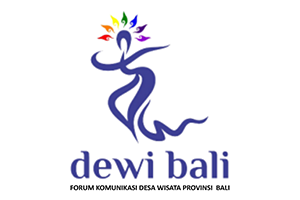Stakeholder Collaboration in Tourism Village Branding: The Case of Gombengsari
DOI:
https://doi.org/10.24922/eot.v12i2.2195Keywords:
co-creation, tourism village, branding capability, stakeholder, GombengsariAbstract
This study argues that cross-stakeholder co-creation, which aligns internal and external branding capabilities, is most effective in converting local assets into a coherent place brand; however, it is still limited by formalistic participation and institutional disharmony. Tourism village branding in Indonesia generally emphasizes promotion without integrating branding capabilities and co-creation, especially in the context of tourism villages. Therefore, we examined Gombengsari (Banyuwangi), which is based on coffee and Etawa goats, as a representative case. The research objective is to develop an integrated, co-creation-based lens to explain how assets are mobilized through the branding process to achieve economic outcomes and destination identity. Using a descriptive qualitative approach, data were collected through observation, documentation, interviews, and focus group discussions (FGDs) with the government and community (purposive–snowball sampling), coded in NVivo, and analyzed interactively. The findings reveal three key assets, including natural, institutional, and social, driven by top-down (tiered policies) and bottom-up (community participation and the slogan “Come–Feel–Enjoy–Stay”) processes. Two brief pieces of evidence: (1) the budget of the Tourism Awareness Group (Pokdarwis) of around Rp200 million/year limits funding for events and promotions; (2) a farm with ±200 Etawa goats produces ±300–500 liters/week, which has been successfully packaged as an educational experience. This article presents a co-creation ecosystem framework that integrates branding capabilities (both internal/external) and co-creation to enhance place branding and local economic benefits. Its limitations are its single case study and short temporal horizon, opening up space for comparative studies across destinations.
References
Aidoo, G. S., Kwaning, C. O., Opoku, A. K., Owusu, A., Ansah, V. O. –, & Afriyie, E. O. (2024). Cultural tourism, place branding, and sustainable development: The role of community engagement, visitor’s satisfaction and environmental awareness. Edelweiss Applied Science and Technology, 8(6), 9609–9632. https://doi.org/10.55214/25768484.v8i6.4063
Alharmoodi, A. A., Khan, M., Mertzanis, C., Gupta, S., Mikalef, P., & Parida, V. (2024). Co-creation and critical factors for the development of an efficient public e-tourism system. Journal of Business Research, 174. https://doi.org/10.1016/j.jbusres.2024.114519
Barandiarán, X., Restrepo, N., & Luna, Á. (2019). Collaborative governance in tourism: lessons from Etorkizuna Eraikiz in the Basque Country, Spain. Tourism Review, 74(4), 902–914. https://doi.org/10.1108/TR-09-2018-0133
Bichler, B. F., & Lösch, M. (2019). Collaborative Governance in Tourism: Empirical Insights into a Community-Oriented Destination. Sustainability, 11(23), 6673. https://doi.org/10.3390/su11236673
Creswell, J. W., & Poth, C. N. (2018). Qualitative Inquiry & Research Design: Choosing Among Five Approaches (4th ed.). SAGE Publications, Inc.
Dureau, C. (2013). Pembaru dan Kekuatan Lokal untuk Pembangunan. Australian Community Development and Civil Society Strengthening Scheme (ACCESS) Tahap II.
Dwyer, L. M., Cvelbar, L. K., Edwards, D. J., & Mihalič, T. A. (2014). Tourism Firms’ Strategic Flexibility: the Case of Slovenia. International Journal of Tourism Research, 16(4), 377–387. https://doi.org/10.1002/jtr.1931
Efendi, D. (2017). Branding Majestic Banyuwangi Jangan Terbatas pada Logo. Timesindonesia.Com. https://timesindonesia.co.id/peristiwa-daerah/154070/branding-majestic-banyuwangi-jangan-terbatas-pada-logo
Fajri, D. N. A., Pitanatri, P. D. S., & Valeri, M. (2024). Sustainable and Feasible: Exploring Motivation Factors Contributing to the Success of Tourism Village Development in Indonesia. In M. Valeri (Ed.), Entrepreneurial Motivations: Strategies, Opportunities and Decisions (pp. 173–190). Springer Nature Switzerland. https://doi.org/10.1007/978-3-031-54435-4_10
García, I. (2020). Asset-Based Community Development (ABCD): core principles. In Research Handbook on Community Development. Edward Elgar Publishing. https://doi.org/10.4337/9781788118477.00010
Handini, Y. D., Notosubroto, S., Sunarti, S., & Pangestuti, E. (2021). The Effect of Branding Capability on Business Performance: An Empirical Study in Indonesia*. Journal of Asian Finance, 8(7).
Hardini, W., Karta, N. L. P. A., & Suarthana, J. H. P. (2015). The Study on Bali Tourism Village Management towards Four Dimensions of Experience Economy. E-Journal of Tourism, 2(1).
Jadesta, K. R. (2023). Desa Wisata Kampung Kopi Gombengsari 300 BESAR ADWI 2023, Gombengsari, Kalipuro, Kabupaten Banyuwangi, Jawa Timur. Jadesta.Kemenparekraf.Go.Id.
Karta, N. L. P. A., Ary Widiastini, N. M., Sutapa, I. K., & Wiles, E. (2021). The Role of Branding Strategy in Strengthening the Image of the Village Tourism in Bali. Jurnal Kajian Bali (Journal of Bali Studies), 11(2), 369. https://doi.org/10.24843/JKB.2021.v11.i02.p07
Karta, N. L. P. A., Kusumawijaya, I. K., & Babu Kappola, V. (2020). The Roles and Contributions of Stakeholders in Villages Tourism Brand Management in Bali and India. Jurnal Kajian Bali (Journal of Bali Studies), 10(1), 73. https://doi.org/10.24843/JKB.2020.v10.i01.p04
Kim, S. K., & Sumberg, J. (2015). Assets, ‘Asset-ness’ and Graduation. IDS Bulletin, 46(2), 124–133. https://doi.org/10.1111/1759-5436.12135
Kominfo.jatimprov. (2023). Sebanyak 29 Desa Wisata di Jawa Timur Masuk Nominasi 300 Besar ADWI 2023. Dinas Kominfo Provinsi Jawa Timur. Kominfo.Jatimprov.Go.Id.
Kusuma, M. Y., & Oktawirani, P. (2024). Agrotourism Tour Package Design at Persemaian Permanen Garahan (PPG) Cluster Durian Wisata Pinus Sidomulyo, Jember. E-Journal of Tourism, 11(2), 242–249. https://doi.org/10.24922/eot.v11i2.118440
Leal, M. M., Casais, B., & Proença, J. F. (2022). Tourism co-creation in place branding: the role of local community. Tourism Review, 77(5), 1322–1332. https://doi.org/10.1108/TR-12-2021-0542
Leung, D., Law, R., van Hoof, H., & Buhalis, D. (2013). Social Media in Tourism and Hospitality: A Literature Review. Journal of Travel & Tourism Marketing, 30(1–2), 3–22. https://doi.org/10.1080/10548408.2013.750919
Mardhiyani, N. L., & Budiastuti, L. (2021). Implementing The Visual Storytelling Model as a Branding Strategy of Kandri Tourism Village on Instagram @desawisatakandri. E3S Web of Conferences, 317, 02018. https://doi.org/10.1051/e3sconf/202131702018
Mastika, I. K., & Nimran, U. (2020). Destination Branding Model Of An Ecological Tourism Village In Bali, Indonesia. GeoJournal of Tourism and Geosites, 31(3), 1068–1074. https://doi.org/10.30892/gtg.31319-542
Mathis, E. F., Kim, H. (Lina), Uysal, M., Sirgy, J. M., & Prebensen, N. K. (2016). The effect of co-creation experience on outcome variable. Annals of Tourism Research, 57, 62–75. https://doi.org/10.1016/j.annals.2015.11.023
Miles, M. B., & A. M. Huberman. (2014). Qualitative data analysis: a methods sourcebook, Third. SAGE Publications, Inc.
Muhammad Roisul Basyar, Antun Mardiyanta, & Erna Setijaningrum. (2025). Multi-Stakeholder Analysis in Building Tourism Resilience: Collaborative Governance Implementation in the Majapahit House Heritage Area, Indonesia . Tourism and Hospital, 6(5).
Musliha. (2022). Social Economic Analysis Of The Tourism Sector. Jurnal Ekonomi Dan Bisnis Airlangga, 32(1), 28–37. https://doi.org/10.20473/jeba.V32I12022.28-37
Musliha, & Adinugraha, H. H. (2022). Digital Marketing In Tourism Destinations. Jurnal Ekonomi Dan Bisnis Airlangga, 32(2), 130–137. https://doi.org/10.20473/jeba.V32I22022.130-137
Nancey G. Leigh, Edward J. Blakel, Y. (2017). Planning Local Economic Development_ Theory and Practice-SAGE Publications.
Noverani, A. P., Handayani, A. R. T., Samsudewa, D., Mahira, Y. A., Harnama, I., Widyasari, S., Nurpadila, S., & Saputri, R. E. (2023). Community involvement in economic activities as tourism support through socialization of Dewi Sakti website in Sambirejo, Bringin, Semarang Regency. AIP Conference Proceedings, 2722(1), 100003. https://doi.org/10.1063/5.0142966
O’Cass, A., & Ngo, L. V. (2011). Achieving customer satisfaction in services firms via branding capability and customer empowerment. Journal of Services Marketing, 25(7). https://doi.org/10.1108/08876041111173615
Odoom, R., Agbemabiese, G. C., Anning-Dorson, T., & Mensah, P. (2017). Branding capabilities and SME performance in an emerging market: The moderating effect of brand regulations. Marketing Intelligence and Planning, 35(4). https://doi.org/10.1108/MIP-08-2016-0138
Odoom, R., Narteh, B., & Rand, J. (2017). Branding and outcomes in small and medium-sized enterprises (SMEs): a resource–capability approach. Journal of Small Business and Entrepreneurship, 29(3). https://doi.org/10.1080/08276331.2017.1300848
Parmawati, R., Saktiawan, Y., Wibowo, F. A. A., & Kurnianto, A. S. (2018). Analysis of Village Tourism Development in Sawahan, Trenggalek Regency, Indonesia: A Sustainable Livelihood Approach. E-Journal of Tourism, 5(1).
Pham, H. L., Pham, H. T., & Nguyen, T. T. (2022). Value co-creation in branding: A systematic review from a tourism perspective. European Journal of Tourism Research, 32. https://doi.org/10.54055/ejtr.v32i.2597
Qin, Y., Albrecht, J. N., & Tao, L. (2024). The Effects of Migratory Village Residents’ Social Identity on Community Participation in Tourism. Journal of China Tourism Research, 20(4), 811–837. https://doi.org/10.1080/19388160.2024.2302562
Rema, V., & Srivastav, A. (2024). Value co-creation through customer engagement in virtual communities for product innovation. International Journal of Business and Globalisation, 36(2/3), 310–325. https://doi.org/10.1504/IJBG.2024.137393
Rio, D., & Nunes, L. M. (2012). Monitoring and evaluation tool for tourism destinations. Tourism Management Perspectives, 4, 64–66. https://doi.org/10.1016/j.tmp.2012.04.002
Riswari, A. A. (2018). Mengintip Pesona Banyuwangi, The Sunrise of Java. Goodnewsfromindonesia.Id. https://www.goodnewsfromindonesia.id/2018/05/15/mengintip-pesona-banyuwangi-the-sunrise-of-java
Rita, P., Borges Tiago, M. T., & Sousa, N. (2024). Empirical Insights into Co-Creation, Satisfaction, and Willingness to Pay in Sustainable Tourism. Journal of Tourism and Services, 15(29), 133–152. https://doi.org/10.29036/jots.v15i29.804
Saito, H., & Ruhanen, L. (2017). Power in tourism stakeholder collaborations: Power types and power holders. Journal of Hospitality and Tourism Management, 31, 189–196. https://doi.org/10.1016/j.jhtm.2017.01.001
Sarmita, R. N., & Hu, C. (2024). Visualizing Smart Tourism Through Smart Community Drivers And Driven Outcomes. E-Journal of Tourism, 11(2), 263–279. https://doi.org/10.24922/eot.v11i2.118460
Sharma, P., & Malik, G. (2024). Cocreating Innovative Tourism Experiences: Towards an Integrative Framework. Tourism Analysis, 29(3), 303–321. https://doi.org/10.3727/108354224X17209081227949
Sishadiyati, & Wahed, M. (2020). pengembangan ekonomi lokal. In Jurnal Ilmu Pendidikan (Vol. 7, Issue 2).
Solakis, K., Katsoni, V., Mahmoud, A. B., & Grigoriou, N. (2024). Factors affecting value co-creation through artificial intelligence in tourism: a general literature review. Journal of Tourism Futures, 10(1). https://doi.org/10.1108/JTF-06-2021-0157
Svensson, P. (2019). Formalized Policy Entrepreneurship as a Governance Tool for Policy Integration. International Journal of Public Administration, 42(14), 1212–1221. https://doi.org/10.1080/01900692.2019.1590401
tempo.co. (2023). Festival Pesta Rakyat Kopi Gombengsari di Banyuwangi, Ada Lomba Tumbuk Kopi hingga Barista. Tempo.Co. https://www.tempo.co/hiburan/festival-pesta-rakyat-kopi-gombengsari-di-banyuwangi-ada-lomba-tumbuk-kopi-hingga-barista-156073
Treasure-Jones, T., Dennerlein, S., Antoniou, P., & Koren, I. (2019). Co-Creation in the Design, Development and Implementation of Technology-Enhanced Learning. Interaction Design and Architecture(s), 42, 5–10. https://doi.org/10.55612/s-5002-042-001psi
Tresiana, N., & Kartika, T. (2024). Developing a Model for Sustainable Traditional Tourism Village. International Journal of Sustainable Development and Planning, 19(6), 2135–2145. https://doi.org/10.18280/ijsdp.190613
Tucker, C. M. (2017). Coffee Culture. Routledge. https://doi.org/10.4324/9781315678795
van den Broek, K. L., Luomba, J., Onyango, H. O., Musobya, M., & Klein, S. A. (2020). A framework for co‐developing conservation research projects with stakeholders: A Lake Victoria case study. Lakes & Reservoirs: Science, Policy and Management for Sustainable Use, 25(4), 403–412. https://doi.org/10.1111/lre.12342
Widhianthini, W. (2014). Effectiveness of Local Institutions as The Basis of Sustainable Tourism Village. E-Journal of Tourism, 4(1).
Widowati, S., Ginaya, G., & Triyuni, N. N. (2019). Penta Helix Model to Develop Ecotourism: Empowering the Community for Economic and Ecological Sustainability. International Journal of Social Sciences and Humanities, 3(2).
Wulandari, A., Aprilina, R., & Marcelino, D. (2025). Increasing competitive advantage in Binong tourism village with the implementation of digital brand destination. Edelweiss Applied Science and Technology, 9(1), 706–712. https://doi.org/10.55214/25768484.v9i1.4234
Yin, Y., Gao, J., & Pan, Y. (2024). What Impacts Tourists’ Co-Creation Experiences in Smart Tourism Destinations? A Mixed Methods Research from Four Chinese Smart Tourism Destinations. Tourism and Hospitality, 5(4), 1327–1343. https://doi.org/10.3390/tourhosp5040074




















